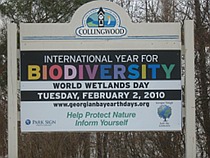Climate literacy starts with recognising that we are part of Nature
“I’d make this the lead story in every paper and newscast on the planet. If we don’t understand the depth of the climate crisis, we will not act in time.”
—Bill McKibben, co-founder of 350.org
“Half of our climate debt is hidden under the carpet of a forgiving planet. If we don’t protect it, we will cause unstoppable, permanent, and irreversible damage.”
—Johan Rockström, joint director of the Potsdam Institute for Climate Impact Research
Last week several days focused on our planet’s ecological wellbeing – Endangered Species Day, May 17; World Bee Day, May 20; International Day for Biological Diversity, May 22; World Turtle Day, May 23.World Environment Day follows on June 5. These days celebrate the natural world and educate the public to be more involved with it. They are there to inform all governments too: the basis for all economics is Nature. It is vital to encourage climate and biodiversity literacy. But, as an amazing and engaging website makes clear, knowing about the climate begins with the recognition that we are one with Nature: https://tinyurl.com/Breathing-with-forest
But who is listening? People are flying more, taking cruises to formerly off-limits places such as Antarctica, and unabashedly are demanding bigger cars, all of which is astounding in light of recent world climate catastrophes. Humans appear to be living on two parallel planets: one that supports and is interlinked with Nature, and another that is encased in a human construct that knows no self-restraint and indeed flouts the most basic communion with others. (One new condominium complex in Florida has a private lift not only for you but also for your vehicle, so you needn’t ever meet anyone…)
As an example of this self-siloed individualism, over the last several months I have pointedly noticed an explosion of pickup trucks on our roads. Not only does their sheer size (and in particular the height of their front fenders) make these super-SUVs more dangerous to other road users in a collision, but they are also adding to an already alarming rise in emissions. Just last week global atmospheric CO2 emissions reached a disastrous 426 parts per million (ppm), the highest level since 4 million years ago. (This is 426 molecules of carbon dioxide in one million molecules of air.) Scientists have shown 350 ppm to be the highest safe level. It is as if people are no longer satisfied with having an SUV, which is destructive enough, and now they need to go for broke. I call this the “Pickup Culture,” whereby you can pick up nods of approval from other people for your status-riddled acquisition. Most people put very little in the cargo space.
Of course, farmers and tradespeople need a vehicle that can transport heavy building materials and farm equipment, but the articles I have read on the subject point to conspicuous consumption as the main objective in having an $80,000 Tesla Cybertruck or other off-road pickup vehicle that is constantly being promoted as a crash-through-river-and-mountain anti-Nature statement. Indeed, as most countries now ban smoking advertising, those perverse car ads that proclaim omniscient power over Nature are toxic and should not be allowed either! The global north’s 10% of world population is defined by a super consumerism whose shopping sprees seems to be limitless. No wonder climate scientists are in despair. https://tinyurl.com/Despair-of-climate-scientists
A few weeks ago, the $34 billion Edmonton to Burnaby Trans Mountain Expansion 980 km pipeline began filling with bitumen to be exported to all parts of the planet. Climate/biodiversity activists, including many Indigenous communities as well as other citizens across Canada grieved upon hearing this news, and with good reason. The pipeline will soon deliver 144,000 barrels a day. This amount will go up over the coming years, but for the sake of a minuscule quantity of the dirtiest and most energy-intensive oil produced on the planet, pristine terrain has been sacrificed, Indigenous territory violently expropriated, and the British Columbian coast put in jeopardy.
Add to this oil tanker traffic polluting with more fossil fuel to get the oil to market, and the project is untenable; include, too, new Alaskan and Ugandan pipelines further adding oil to the daily world usage. Remember that the world currently burns almost 100 million barrels of oil each day! What sort of human gives the green light to build an oil pipeline in the face of accelerating climate change? Clearly there are plenty of us who would do so. Avarice is not in short supply.
The Pickup Culture is only too happy to bleed Earth dry in order to be cool. And although the vast majority of young people want a climate action plan to be implemented now, 10% of Earth’s population is all too content to open the oil spigot. Americans and Canadians burn around ten times more fossil energy than Indians do. So-called educated people continue to fly or take cruise ships, both of which use vast amounts of oil. Amazingly, many cruises are promoted by National Geographic which receives millions in revenue when rich North Americans fly to southern Chile and take small cruise ships to see penguins and icebergs in Antarctica, along with a National Geographic wildlife photographer who accompanies them to document that they saw these animals before they disappeared because of climate breakdown. Talk about blowing your life’s complete carbon budget.
At the same time, young people try to take their governments to court to argue that a failure to protect them from climate breakdown is unjust. Most of the time, these court hearings are stopped. One major trial in Oregon ended abruptly this last week. Meanwhile, the following website unflinchingly lays out the role banks play in funding our collective 10% global north madness: https://tinyurl.com/Banking-chaos
At the same time, in northern Ontario the Omushkego people are protecting what they call the Breathing Lands, as their lands contain vast peat bogs that hold immense quantities of carbon. They wish to protect an area five times the size of Nova Scotia. https://tinyurl.com/Breathing-lands
Please read the UN Emissions Gap Report 2020 to better understand the “the role of equitable low-carbon lifestyles.” https://tinyurl.com/Equitable-living
Not sure of all the information you need to be climate literate? A fantastic booklet, Atlas of Climate Change: Changes in the Atmosphere and Risks of Warming enhances our climate/biodiversity literacy. It was written by scientists for the general public to have an informed and strong foundation to make Earth-friendly decisions. https://tinyurl.com/Atlas-of-climate
We know that conservation actions make a huge difference. A new report points out that great success has come by doggedly pursuing biodiversity goals. https://tinyurl.com/Conservation-actions, and a recent meeting attended by all countries connected to the UN Convention on Biological Diversity made headway to protect Nature at the upcoming conference in Colombia this autumn.
Finally, a world symposium on climate literacy will take place online this September. The organizers say: “The many challenges posed by climate change outline the need for climate change literacy… As climate change affects all sectors of society, climate literacy is necessary for everyone, from policy-makers and scientists to students and the general public, ensuring a well-informed community ready to tackle these challenges effectively.” https://tinyurl.com/Climate-literacy-symposium
We dance round in a ring and suppose,
—Robert Frost
But the Secret sits in the middle and knows.

